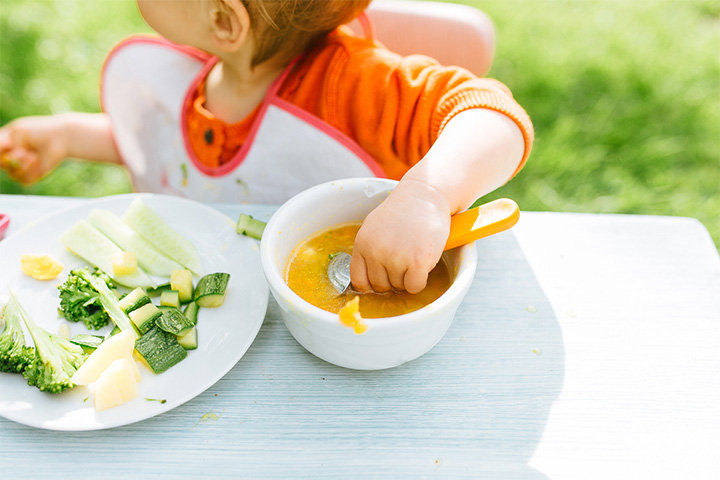
Image: Shutterstock
Introducing your baby to solid food is an exciting milestone! After months of nursing and formula your baby is finally ready to start tasting solids. This is a relief for parents, especially mothers who have breastfed their babies exclusively. But the transition between milk and solids may not be as rosy as it may seem. Babies are fussy and this is no different when it comes to food. They may not like a specific texture, taste or color and will let you know by spitting all over themselves and on your clean kitchen floors. This is also the time when you and your baby find out if they have any food allergies (the hard way). In hindsight switching all the way to solids can be stressful and time consuming.
Here is our beginners guide on how to help your baby enjoy their first taste of solid food:
1. Are They Ready
Image: Shutterstock
Although you may be excited to introduce solids into your baby’s diet, you should not force itt. It is best for your baby to breastfeed for the first 6 months at the very least in order to absorb all the nutrients they need. There are many benefits of breastfeeding for both mothers and babies. This period will ensure that your baby’s digestive system and immune system have the time to develop and mature well. But after 6 months, your breastmilk will not provide all the required nutrients that your little one needs, especially iron. And you will need to gradually include solids into their diet.
2. What To Give Them And When
Switching from an all liquid diet to solids can be overwhelming for your baby. So it is best to take things slow and introduce them one item at a time, at least 4 to 5 days apart. This will make it easier to keep track of things your baby likes and dislikes and trace food allergies they may have. Another great hack is to start with single ingredient food, like pureed veggies and fruits or cereals like plain rice. It is okay to introduce gluten to your baby’s diet, which is usually found in wheat, under the cover of breastfeeding between the 6 to 7 month mark. Around the same time start introducing cow’s milk in very small quantities. But hold off giving them this beverage as a main drink until they have completed 12 months.
3. How To Deal With Textures
Image: Shutterstock
The easiest way to introduce your baby to adult food is through purees. But you can let them try mashed and minced food around the 7 to 9 month period. Be sure to include a couple of lumps by mashing the food up with a fork and not putting it in a blender and see how they handle the texture. Chances are your baby will take to it in no time! You can also start finger food after 7 months. Upon reaching 10 months your baby’s food is ready to be upgraded to something more adult-like. And no we don’t mean a protein shake. Make sure to give your baby meals that include chopped and minced food that encourages them to chew. This is good practice for the new set of teeth they’ve got.
4. What Foods Your Baby Should Avoid
Image: Shutterstock
It is important to keep in mind that your baby’s immune and digestive system is still not fully mature which makes them susceptible to stomach infections. Make sure you use safe drinking water while cooking their food and store their leftovers properly. There are some foods that your baby must avoid until they reach the age of 1. Foods like honey, salt, sugar, artificial sweeteners (and every item that uses them), fish which have high levels of mercury, low fat foods and caffeine are harmful for your baby. It is also advisable to avoid giving any child under the age of 5 whole nuts as there is a greater chance of them choking. Instead, powder them and add it to their food to see if they take to it.
5. Healthy Baby Foods To Include
Image: Shutterstock
It is best to use fresh and seasonal ingredients while making your baby’s dishes as they carry the highest nutritional value. And make sure to construct a diet with various ingredients in order to facilitate growth and development. One way to ensure that they are getting all their vitamins and nutrients is feeding them foods from all the colors of the rainbow. Include spices like ginger, garlic, turmeric, coriander and cumin to help with digestion and make the meal tastier. Adding iron supplements after consulting the doctor can prevent iron deficiency.
Watching your baby grow and experience new foods can be exciting and frustrating. Know that weaning your baby off milk onto solids full time is a long process filled with trial and error. One that your baby and you will get the hang of gradually. In the meantime, enjoy exploring new tastes and textures with your baby and watch their face light up in delight when they’ve found a new favorite.
















